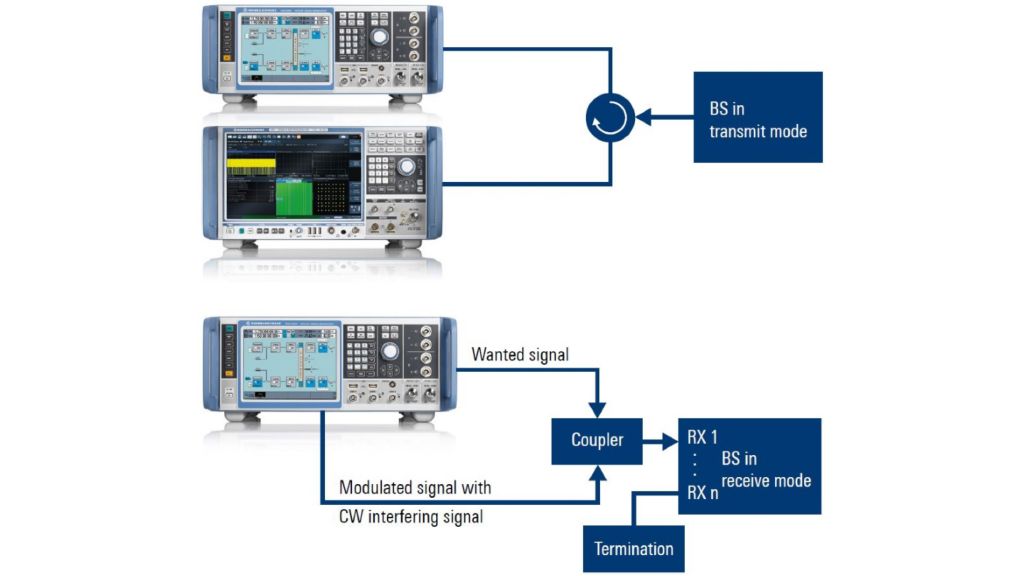Speed up conformance testing of 5G NR base stations
The test case wizard enables the signal generator to set up all required parameters for conformance testing of 5G NR base stations in no time with just a few clicks.

The test case wizard enables the signal generator to set up all required parameters for conformance testing of 5G NR base stations in no time with just a few clicks.


Fig. 1: Typical test setups for transmitter tests (top) and receiver tests (bottom) on base stations.
The conformance tests specified by 3GPP for 5G NR are documented in TS 38.141-1 for conducted and TS 38.141-2 for OTA tests. This includes measurements for evaluating transmitter characteristics and receiver performance under noise and fading conditions. Base stations need to pass conformance tests in the region where they will be installed before they can start operation in the field.
Typically, a combination of a vector signal generator and a signal and spectrum analyzer is used to perform base station tests (Fig. 1). The signal generator usually has to provide several defined signals, in most cases with additional noise or fading (Fig. 2). Furthermore, base stations are tested with many different settings (e.g. bandwidths), leading to several hundred individual tests that need to be performed. Correct configuration of the individual test signals on the signal generator can be very time-consuming.


Fig. 3: Complex test signals can be composed in just a few steps with the test case wizard
The R&S®FSW signal and spectrum analyzer and the R&S®SMW200A vector signal generator are leading hardware solutions for base station tests. With the R&S®SMW-K144 option, the R&S®SMW200A offers a complete solution for 5G NR signal generation. A convenient part of this option is the test case wizard (Fig. 3), which supports the user with specification-compliant signal configuration. All conformance test cases for conducted and OTA measurements are supported.
After selection of the relevant test case, complex test scenarios can be quickly configured in just a few steps. The user only has to enter specific signal parameters, such as bandwidth or cell ID, in the clearly structured user interface. The graphic representation of the resulting test signals provides a good overview of the signal configuration.
Accurate signals with minimum calibration effort
Precise output levels of the wanted and interfering signals are crucial for accurate receiver measurements. The R&S®SMW200A uniquely allows all required signals to be generated internally and output on multiple RF ports. This also applies to signals with additional channel emulation since the generator can be equipped with internal fading simulators.
A conventional setup with individual signal generators and external fading simulators is rather complex and needs extensive calibration. The fully integrated solution based on the R&S®SMW200A and R&S®SGT100A vector RF source offers the advantage of up to eight high precision output signals in a compact design and with minimum calibration effort.
Fig. 2: Required signals for selected TS 38.141 test cases
| Test case according to 3GPP TS 38.141 | Wanted signal | AWGN | Modulated interfering signal | CW interfering signal | Fading | Real-time HARQ and timing adjustment |
|---|---|---|---|---|---|---|
| 6.7 (6.8 OTA) Transmitter intermodulation | – | – | ● | – | – | – |
| 7.7 Receiver intermodulation | ● | ● | ● | ● | – | – |
| 8.2.1 Performance requirements for PUSCH | ● | ● | – | – | ● | ● |
See also
Conducted conformance testing according to TS 38.141-1:
Radiated conformance testing according to TS 38.141-2: